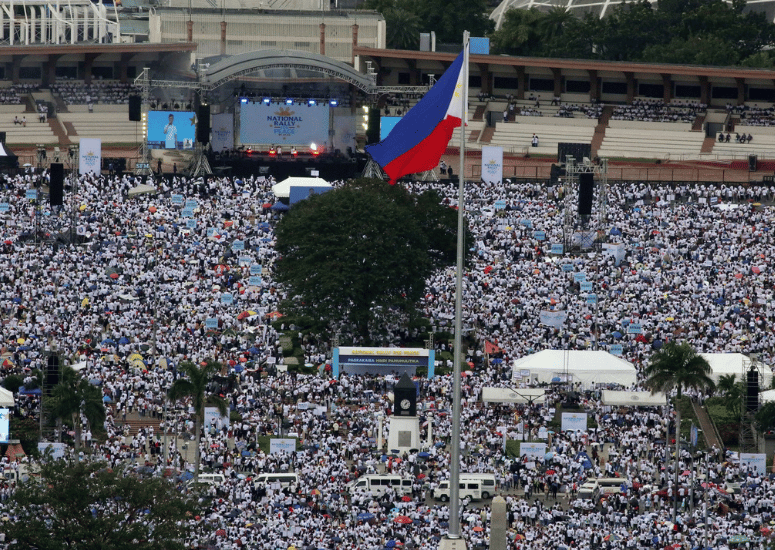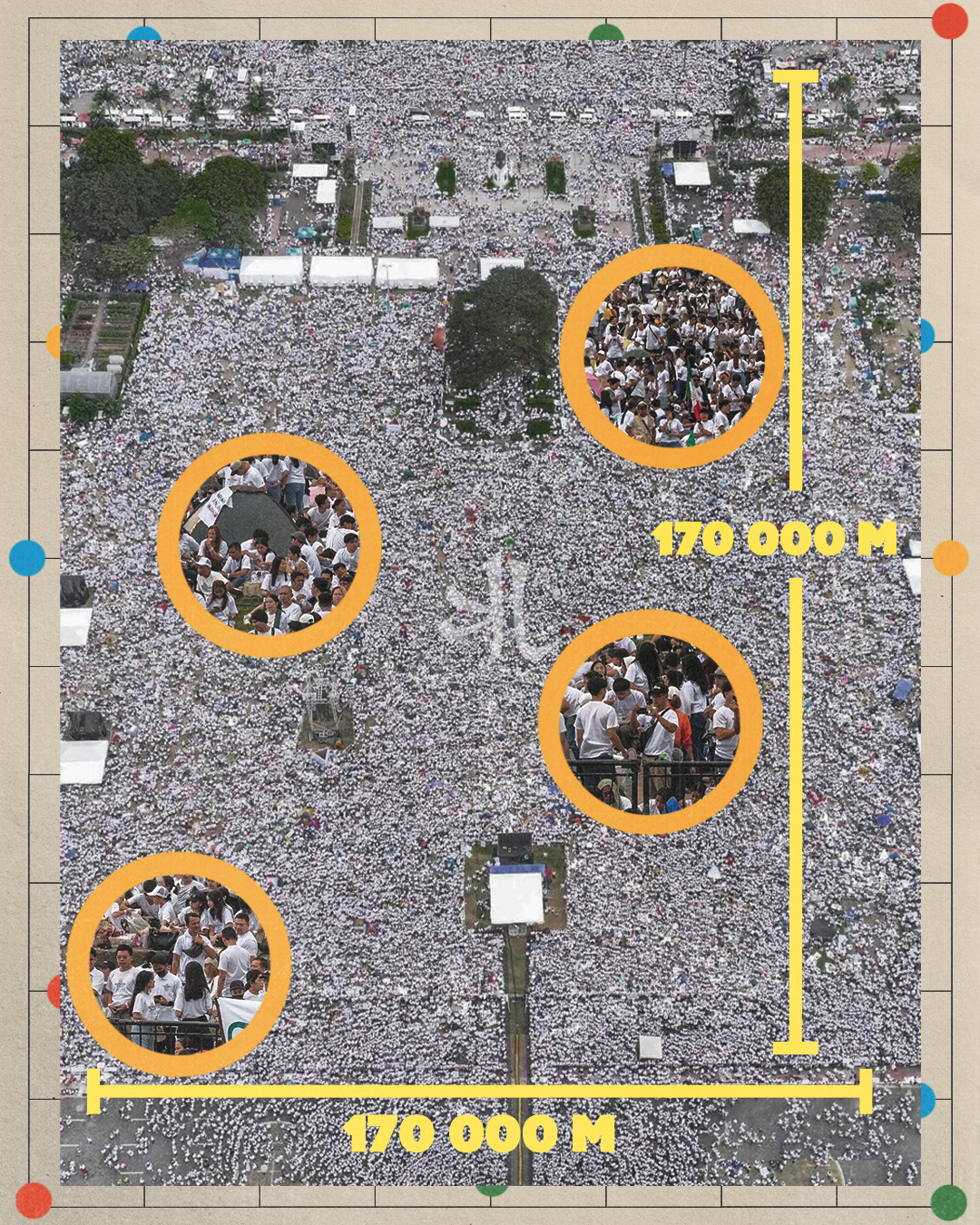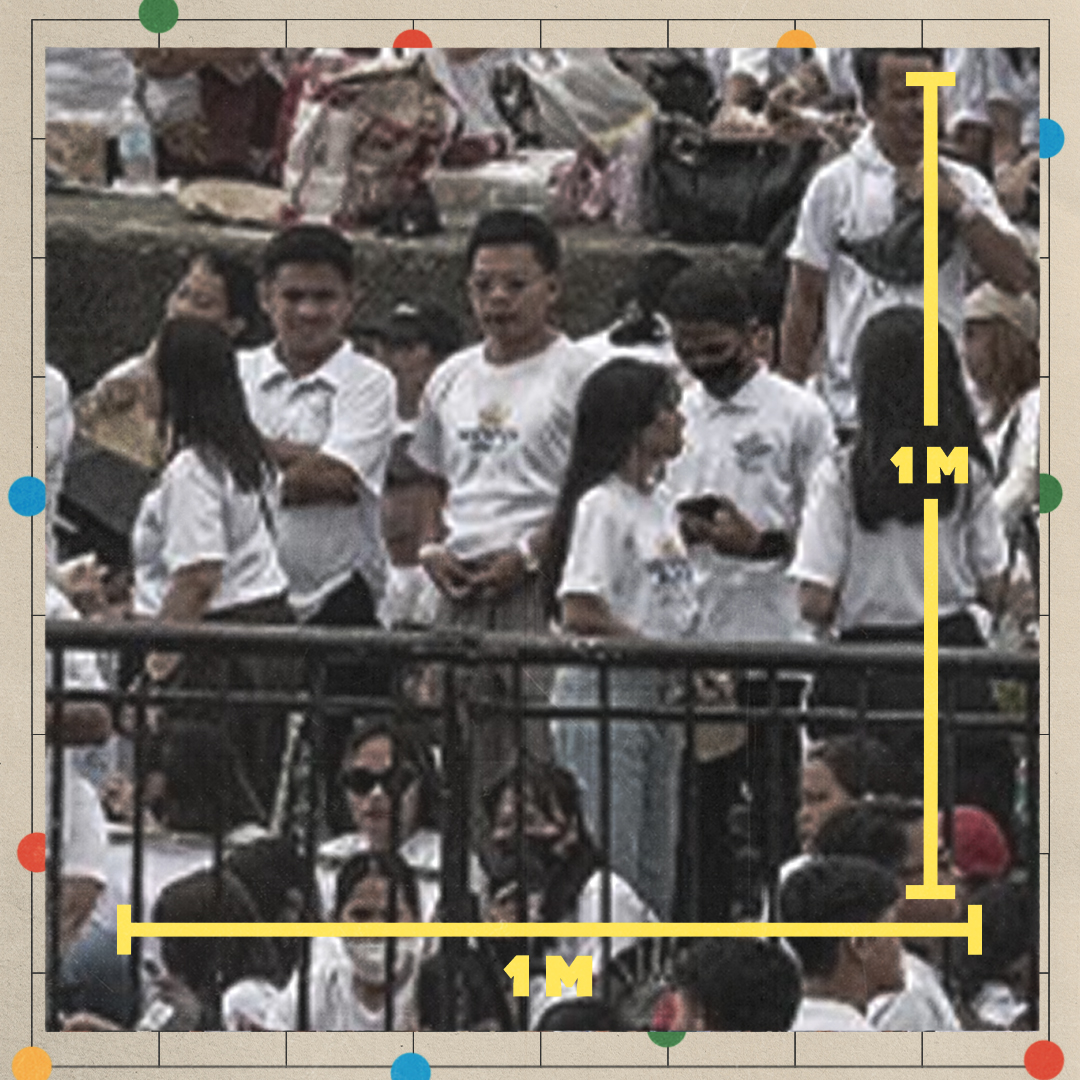EXPLAINER: Why crowd counting is tricky and should be taken with a dose of skepticism
An estimated 1.5 million people flocked to Manila for the “National Rally for Peace” of Iglesia Ni Cristo on Jan. 13—how exactly did officials get that number?
The event, organized to call for peace amid a political feud concerning Vice President Sara Duterte, gathered INC members in 13 sites nationwide including Cebu, Legazpi, Ilagan, Puerto Princesa, Bacolod, Iloilo, Cagayan de Oro, Davao, Butuan, and Pagadian.
Quirino Grandstand had the biggest gathering with a total of 1,580,000 attendees, as per the Manila Disaster Risk Reduction and Management Office (MDRRMO) on Jan. 13, 4 p.m.
The Philippine National Police (PNP) gave a similar number. In a press briefing, PNP spokesperson Police BGen. Jean Fajardo said "more or less 1.5 million to close to 1.6 million" were at the Manila gathering.
More than showing the solid pact of the religious group, Clarissa Bautista, nation editor of The Philippine STAR, explained how crowd counts may also affect public perception, especially in the context of politics.

“Although the INC maintained that politics had nothing to do with the rally, the massive crowd may be observed as a warning of what numbers the religious group could gather for politicians and poll candidates, especially Vice President Sara Duterte who is considering running for president in 2028,” she told PhilSTAR L!fe.
“It can be perceived as an indicator of popularity and political strength,” she added. Bautista also noted that the crowd size becomes more significant through social media, as it can be spread quickly and be framed through captions or commentary.
Counting a large crowd seems next to impossible. You may wonder, how do they come up with a figure for that big a gathering?
How can a large crowd count be estimated?
MDRRMO local officer Alain Thomas Matias explained to L!fe that their office primarily draws an estimated count.
They do this by flying a drone to get an aerial perspective to see the extent of where the crowds reach. Once they have obtained the aerial stills and footage, they process these on the Geographic Information System (GIS) to measure the area that was occupied by the crowds in square meters.

“Once we get the figure of the area occupied (say in this case around 160,000 to 170,000 sqm or approximately 17 hectares), we multiply it by a factorial of 0.12,” Matias continued, adding that a 0.12 factorial equates to about eight people per square meter.

“It is a value we have come up with by literally standing eight people in 1 square meter (comfortably) to quantify crowd density. So for example, 170,000 sqm (area) / 0.125 (density factorial) = 1,360,000 +/- (give or take).”
For his part, University of the Philippines Los Baños mathematics professor Dr. Jomar Rabajante said that estimates may also be done by summing up attendance sheets if the crowd belongs to one organization. Another way is estimating the number of people in one small area.
When AI and other statistical geospatial tools come into play, Rabajante said, "timing of the aerial shot is important, such as [it] should be taken during the peak time."
Meanwhile, Manila Police District Spokesperson Major Philipp Ines previously shared with L!fe that they somehow used Jacobs’ Method during the campaign rallies in 2022.
ICYDK, Jacobs’ Method, popularized by journalist Herbert Jacobs, determines the crowd size by dividing an area occupied by a crowd into sections.
Once you've separated a section of the crowd, the next thing to determine is the density of people in that space. To do that, you have to find the average square meter each person in the crowd takes up. For instance, the crowd measures 100 sqm, it will then be divided by 1/2 sqm (the average space a person takes up) to find the density. The next step would be to multiply the density by the number of sections with people in it.
'Not an exact science'
However, Rabajante noted how making estimates according to area can be complicated. “One problem here is if there are irregular boundaries and if the number of people per area in the grid has too much variation."
The MDRRMO stands by its process of crowd counting, with Matias saying that they do not bloat or exaggerate numbers.
“We stand by our process and believe it is a realistic estimation of crowd density on events like this. Again, this is not an exact science, but just to give others a perspective of the scale of events,” he further explained.
What's in a number?
But why is it important to take into account the crowd count? For local DRRMOs, the figure allows them to give proper responses to the event, such as effectively allocating their resources to ensure the safety of the participants.
“Basically, when we prepare our Incident Action Plan, a large part of it is based on how many people would be present to preposition the appropriate assets/resources, should they be needed,” he added.
These figures can be a "political tool" as well, according to Bautista as it becomes a "symbol of political stregth, unity, or divisiveness, influencing both public opinion and media narratives."
Dose of skepticism
At the end of the day, large figures like these must be taken with a grain of salt. Bautista said that reporting figures with skepticism is vital to “prevent bias, exaggeration, or misrepresentation of the true scale of an event.”
“Both organizers and critics of an event, such as the INC rally for peace, might have 'vested interests' in inflating or downplaying crowd numbers. Skepticism helps journalists sift through conflicting reports and resist pressure to report figures that may be politically motivated, ensuring more balanced and honest news reporting,” she said, adding that journalists must be vigilant against the manipulation of numbers.
“Readers will trust the news report when they see that reporters are questioning sources and verifying facts, instead of simply reporting the crowd size,” she said.
Additionally, Bautista stressed that journalists must be transparent on how the figures were made, including citing independent experts or third-party sources who have analyzed the crowd size to avoid potential bias in the reporting.



